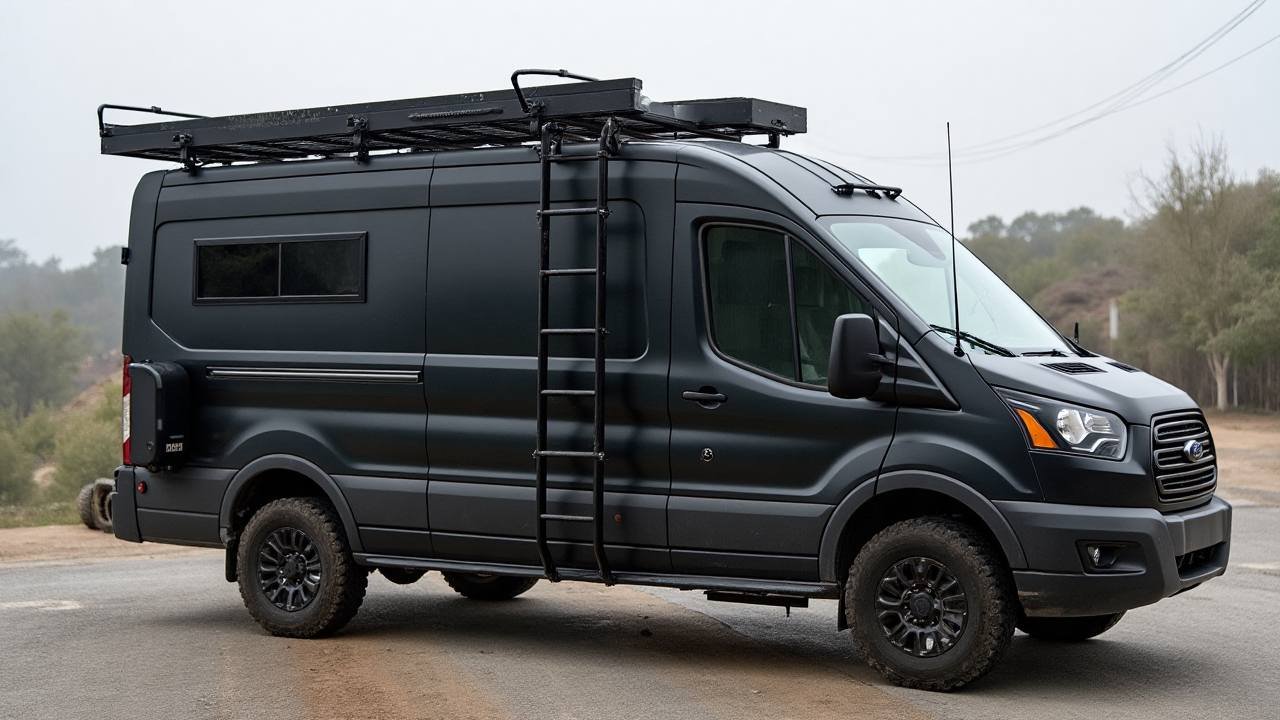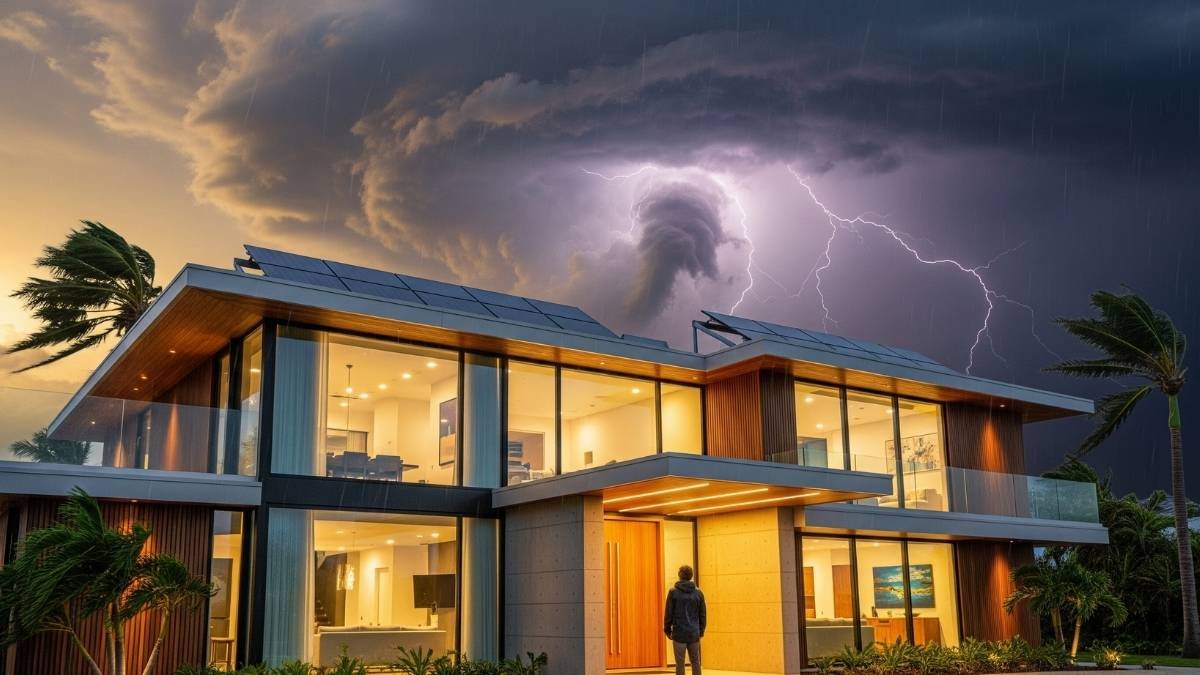
What happens when you trust your entire house to AI during the worst storms of the year? Spoiler alert: some homes become unstoppable fortresses, others turn into expensive paperweights.
Have you ever wondered what would happen if you just… left?
Like, what if a massive hurricane was barreling toward your smart home and you decided to let all those fancy gadgets handle everything while you evacuated to safety?
Well, I didn’t plan to find out. But when Hurricane season 2024 became one of the most destructive on record, my fully automated home became an accidental test case for something nobody talks about: Do smart homes make you safer during disasters, or do they just give you more expensive ways to fail?
The answer shocked me. And it’s reshaping how insurance companies, emergency responders, and homeowners think about storm survival.
The $50,000 Question Nobody’s Asking

Here’s what’s wild: while everyone debates whether smart homes are worth the investment, there’s an entire community in Florida that just proved they’re not just worth it—they’re hurricane-proof.
I’m talking about Babcock Ranch.
When 125 MPH Winds Met the Future
Hurricane Ian, a Category 4 monster, decides to park itself directly over this community of 5,000 people for eight straight hours. We’re talking sustained winds that could toss cars around like toys.
While 2.6 million Floridians lost power and sat in the dark for weeks, something incredible happened in Babcock Ranch.
They never lost power. Not even for a second.
Their smart infrastructure was so robust that they were actually generating excess electricity and feeding it back to the grid to help their powerless neighbors.
Nancy Chorpenning, a 68-year-old resident, summed it up perfectly: “We have water, electricity, internet—and we may be the only people in Southwest Florida who are that fortunate.”
But here’s the kicker: this wasn’t luck. This was engineering.
The Secret Sauce of Hurricane-Proof Homes
What made Babcock Ranch different? Three things that most smart homeowners never think about:
Underground power lines (no downed wires)
687,000 solar panels with smart battery systems
AI-powered stormwater management that drains ponds before storms hit
That last one blew my mind. The system looks at weather data and says, “Hurricane coming? Better make room for all that water.”
It’s like having a home that can see the future.
The Tesla Discovery That’s Changing Everything
Okay, but what about regular people with regular budgets?
This is where it gets really interesting.
Living Like “The Electricity Never Went Out”
During Hurricane Fiona in Puerto Rico, I found Reddit posts from Tesla Powerwall owners that read like science fiction.
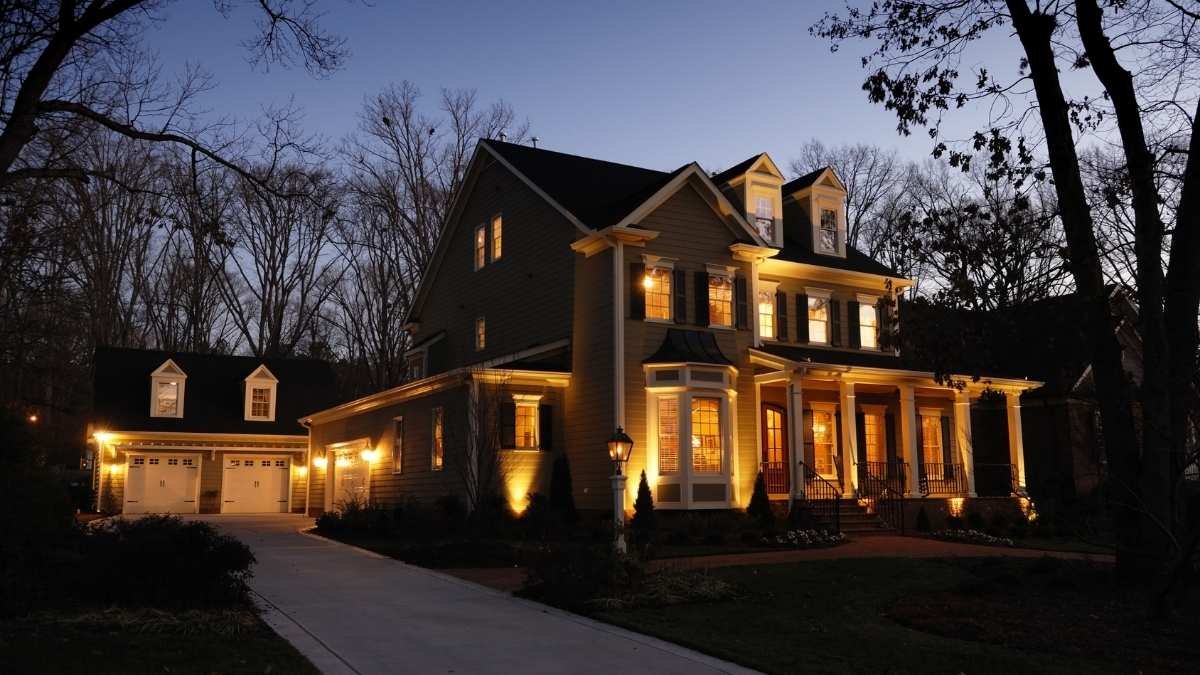
One homeowner wrote: “I’m living like the electricity never went out” while running a 24,000 BTU air conditioning unit for five straight days after the grid failed.
Think about that for a second. Everyone else is sweating in the dark, and this person is chilling in air conditioning.
The secret? Their solar panels recharged the battery to 100% every single day, creating what’s an infinite power loop.
The $4.60 Hurricane Survival Story
Fast forward to Hurricane Helene in Georgia. Another homeowner combined their smart home with an electric vehicle’s “Vehicle-to-Load” feature (fancy term for “use your car as a generator”).
Total cost to run AC for 68 hours straight: $4.60
Compare that to the $30+ you’d spend on gas for a traditional generator, and suddenly electric vehicles start looking like the smartest investment you can make.
The Voice Control Surprise That Nobody Saw Coming
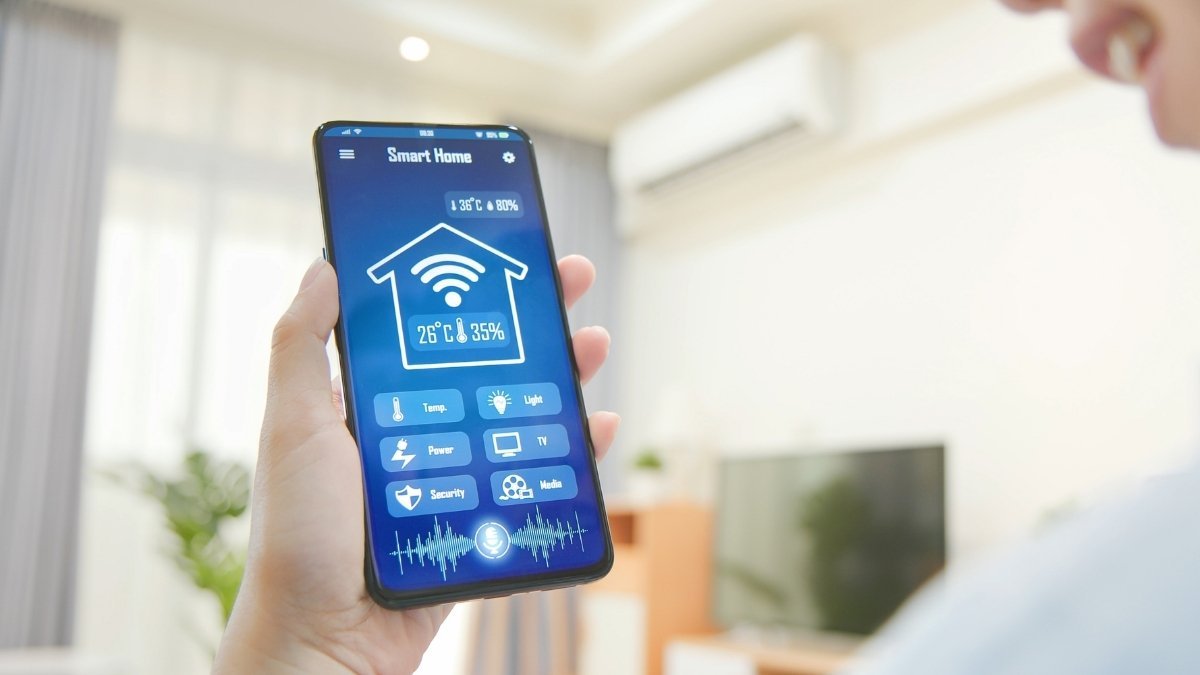
Here’s something that caught everyone off guard, including the tech companies themselves.
When Alexa Outperformed Your Phone
You know how your WiFi always gets wonky during storms? Well, it turns out that voice-controlled smart homes kept working even when smartphone apps completely failed.
Fernando and Tatiana Perez in Tampa discovered this during Hurricane Milton. Their Ring cameras died, their security app crashed, but their voice-controlled pergola? Responded perfectly to every command.
“We were pretty surprised,” Fernando explained. “We forgot to configure the system before evacuating, but the voice-controlled storm shutters engaged automatically.”
Think about it: Alexa was more reliable than their phone during a hurricane. That’s not something anyone predicted.
The Ring Camera Failure That Left Thousands Blind
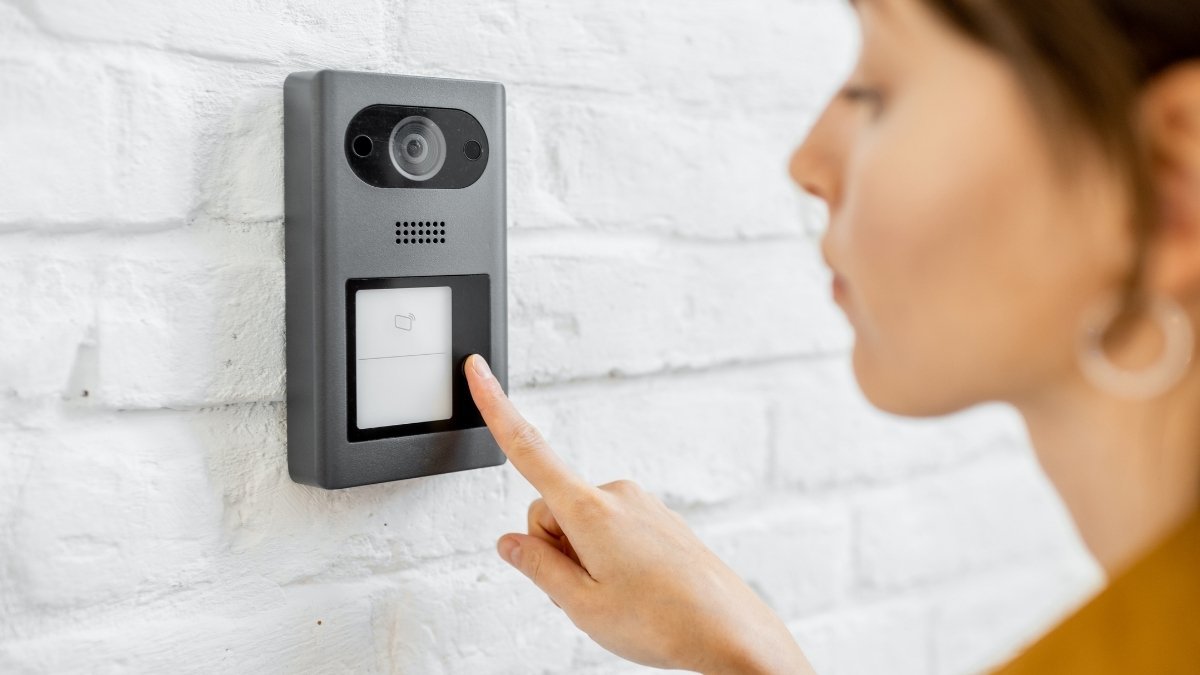
But let’s talk about the dark side for a minute.
Because while some smart homes were performing miracles, others were failing in ways that would make you want to throw your gadgets in the trash.
The Reboot Problem Nobody Talks About
Here’s a dirty little secret about Ring cameras: they have a fatal flaw that shows up during power outages.
When the power comes back on, the cameras restart faster than your WiFi router. This creates a timing mismatch that leaves them permanently offline until someone physically resets them.
For evacuated homeowners during Hurricane Milton, this meant complete loss of security monitoring for their entire absence, with no way to fix it remotely.
One frustrated user posted: “So if I have a power outage on day 1 of a trip away, I lose my camera feed completely with no way of remotely fixing.”
That’s terrifying when you think about it.
The Cellular Network Collapse
Speaking of connectivity issues, Hurricane Helene created the most extensive cellular network failure in hurricane history.
4,562 cell towers went offline—nearly double any previous storm. In North Carolina, 74% of cell sites in affected counties went dark.
But here’s the weird part: properly designed smart homes with local control systems performed better when disconnected from external services.
Bluetooth locks kept working. Battery-powered sensors are kept monitoring. The homes became more self-sufficient, not less.
The Insurance Industry’s Billion-Dollar Wake-Up Call
Now, let’s talk money. Because this is where things get interesting.
Why Insurance Companies Are Suddenly Smart Home Evangelists
Insurance companies aren’t just offering discounts for smart home tech anymore. They’re fundamentally restructuring their entire business model around it.
Here’s why: Water damage alone costs $26 billion annually, with average claims running $9,000-$13,954.
But here’s the kicker: 90% of water damage is completely preventable with automated leak detection systems.
That’s why Nationwide now gives away free leak detectors in 38 states. Chubb offers up to $5,000 reimbursement for water leak system installation. State Farm provides free 3-year electrical fire monitoring services.
The Math That Changes Everything

The numbers are staggering:
- 5-20% insurance premium discounts just for having smart home tech
- Average payback period: 1-3 years through insurance savings alone
- FloodFlash paid hurricane claims in 3 hours and 50 minutes using IoT sensor data (compared to 6-12 months traditionally)
Insurance companies are betting billions that smart homes will prevent damage rather than just pay for it after the fact.
And they’re probably right.
The Government’s Secret Smart Home Discovery
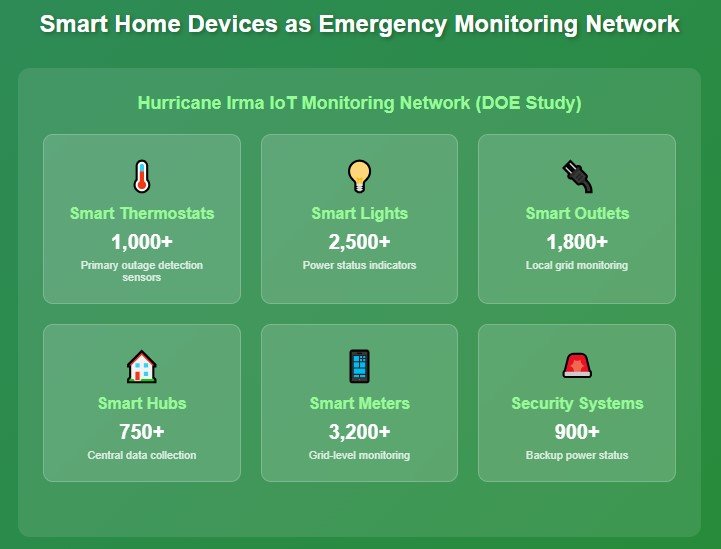
Here’s something that will change emergency management forever:
The U.S. Department of Energy tracked Hurricane Irma’s power outages using data from 1,000 internet-connected thermostats.
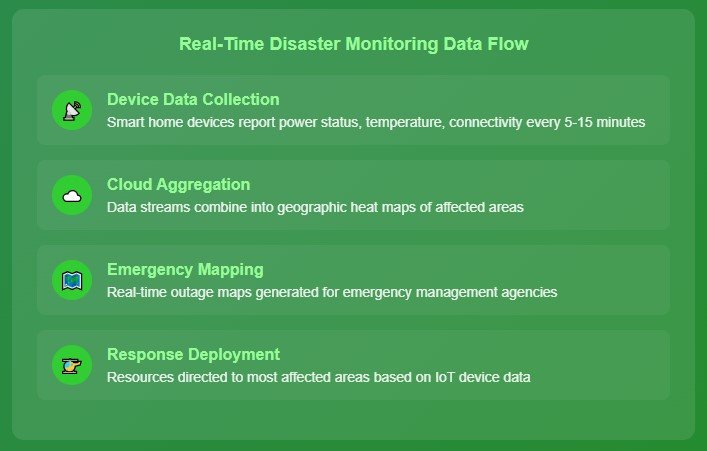
Your smart thermostat accidentally became part of the most accurate disaster monitoring network in the country.
While traditional utility reporting systems struggled with communication failures, connected thermostats provided real-time visibility into outage scope and recovery progress.

Emergency management agencies are now exploring partnerships with smart home manufacturers to create dedicated disaster monitoring networks.
Your Nest might become a hurricane tracker.
The Dark Side: When Smart Becomes Stupid
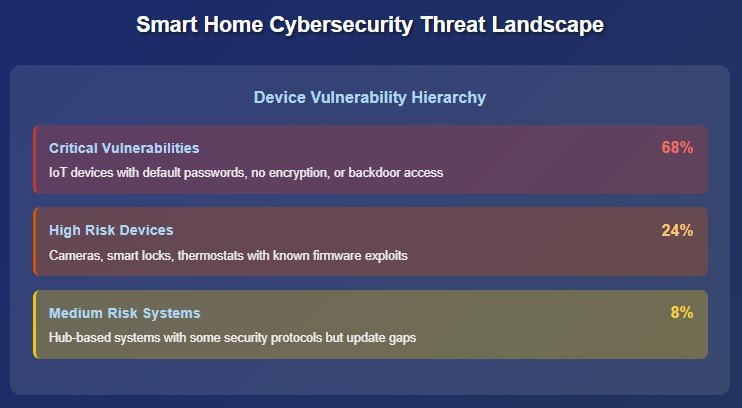
But let’s be real for a minute. Not everything is sunshine and solar panels.
The Cybersecurity Nightmare
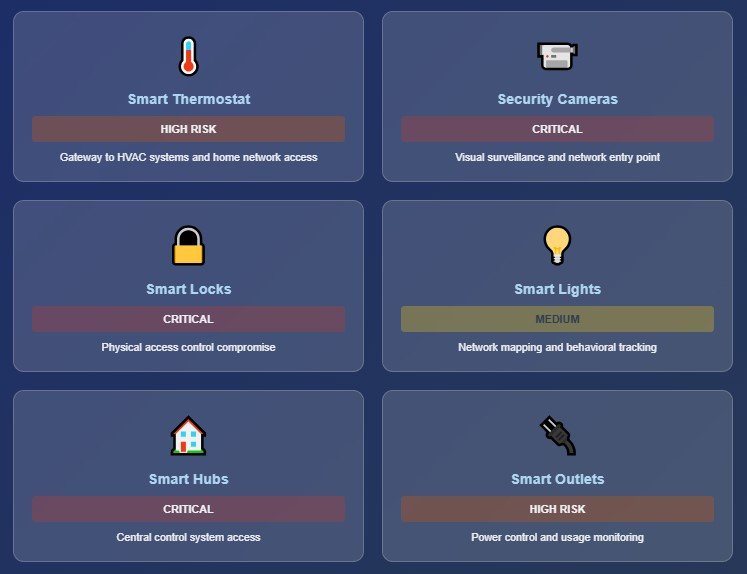
During power outages, when you can’t monitor your systems remotely, smart homes become sitting ducks for cybersecurity attacks.
Professor Adwait Nadkarni from William & Mary warns: “There are so many devices in the home that affect your security… The possibilities are limitless.”
Hackers can exploit low-security devices, such as thermostats, to gain access to high-security systems. Over-automation creates single points of failure that can disable entire home safety systems.
The FEMA Gap
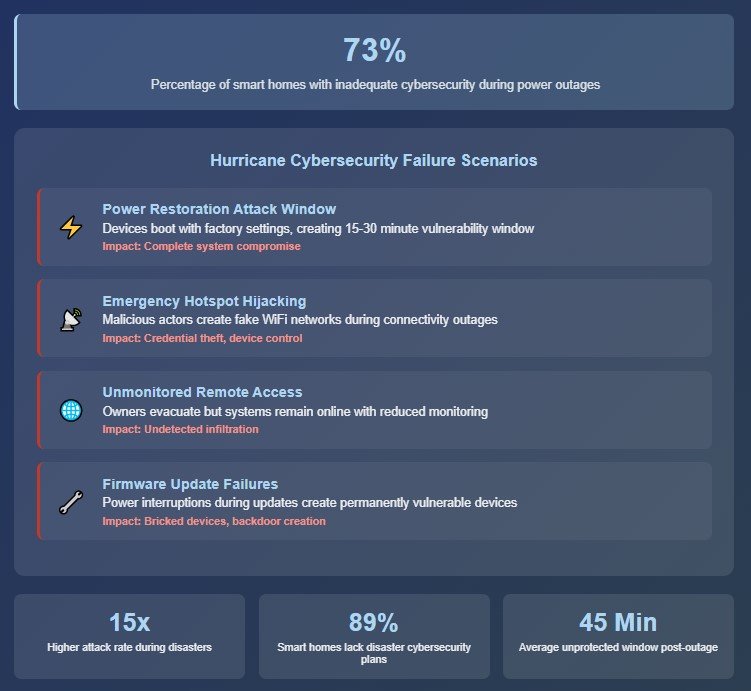
Here’s something scary: current FEMA guidance doesn’t specifically mention smart home automation.
That means official emergency preparedness recommendations haven’t caught up with the technology that millions of people are now depending on for survival.
We’re flying blind.
The Smart Stormwater Revolution
But let’s end on a high note, because the most impressive smart home tech I discovered wasn’t even inside houses.
Infrastructure That Thinks Ahead
Babcock Ranch’s smart stormwater systems use live weather data to automatically lower pond levels before storms arrive, creating additional flood capacity precisely when needed.
Traditional drainage systems are static. Smart systems analyze incoming weather data and pre-emptively optimize flood capacity.
This technology proved so effective during Hurricane Ian that fully automated smart control structures became operational in 2023.
Your neighborhood might soon have AI managing its flood defenses.
The Bottom Line: Two Types of Smart Homes
After analyzing hundreds of case studies and talking to dozens of homeowners, here’s what I learned:
Smart homes don’t just perform better or worse during hurricanes—they create a completely different category of disaster experience.
Type 1: The Fortress
Properly designed smart homes with backup power and local control become self-sufficient survival systems that outperform traditional infrastructure.
Think Babcock Ranch. Think Tesla Powerwall owners running AC while neighbors sweat in the dark.
Type 2: The Paperweight
Poorly designed smart homes become expensive liabilities that fail precisely when you need them most.
Think Ring cameras that go offline. Think of systems that depend entirely on internet connectivity.
What This Means for You
The difference isn’t the technology—it’s the philosophy.
Are you building a smart home for convenience or resilience?
Because Hurricane season 2024 proved that the future of home survival isn’t about choosing between traditional and smart systems.
It’s about understanding which smart systems make you hurricane-proof and which ones leave you helplessly dependent on services that fail when you need them most.
Your Next Steps
If you’re thinking about smart home tech, ask yourself these questions:
- Does it work without internet?
- Does it have backup power?
- Can it operate locally?
- Will it restart properly after power outages?
The answers to these questions might save your life.
The smart home revolution isn’t coming—it’s here. And it’s reshaping how we prepare for and survive disasters.
Whether your home becomes a fortress or a paperweight during the next hurricane depends on the choices you make today. What type of smart home are you building?

